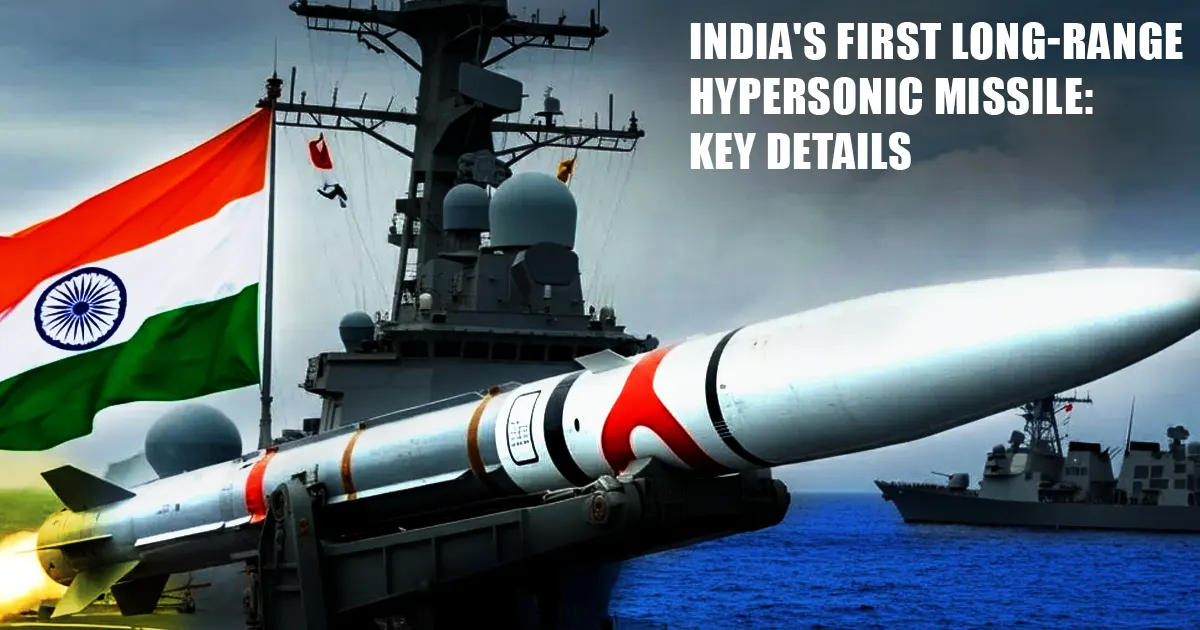
On 18 November 2024, the DRDO (Defence Research and Development Organisation) successfully test-fired India’s first long-range hypersonic missile off the Odisha coast, marking a significant milestone in India’s defence capabilities.
Key Features of the Missile
- Range: Over 1500 km.
- Global Pioneers: India joins an elite group of nations with hypersonic technology, previously limited to the United States, Russia, and China.
- Technologies Demonstrated:
- Aerodynamic Configuration: For hypersonic manoeuvres ensuring stability and control.
- Scramjet Propulsion:
- Utilizes forward motion to compress air for combustion.
- Operates efficiently at hypersonic speeds.
- Thermo-Structural Characterization: Ability to withstand extreme aerothermal conditions during flight.
- Separation Mechanism: Effective at hypersonic velocities.
Understanding Hypersonic Missiles
- Speed:
- Hypersonic weapons fly at Mach 5 or more, which is five times the speed of sound.
- Speeds are classified as:
- Mach 1 to Mach 5: Supersonic
- Above Mach 5: Hypersonic
- Advantages:
- Exceptional speed and manoeuvrability make these missiles difficult to detect and intercept.
- Their ability to manoeuvre during flight provides strategic flexibility and evasion capabilities.
India’s Missile Systems
- Inducted Systems:
- AKASH: Surface-to-air missile system.
- BRAHMOS: Long-range supersonic cruise missile.
- Advanced Stage of Induction:
- NAG: Anti-tank guided missile.
- ASTRA: Air-to-air missile.
- Agni Series: Long-range ballistic missiles.
About DRDO
- Formation: Established in 1958, under the Ministry of Defence.
- Objective: Achieving self-reliance in defence technology by developing cutting-edge innovations.
- Infrastructure: Operates a network of 41 specialized laboratories focused on fields such as:
- Aeronautics
- Electronics
- Missiles
- Combat vehicles
- Advanced computing and simulation




